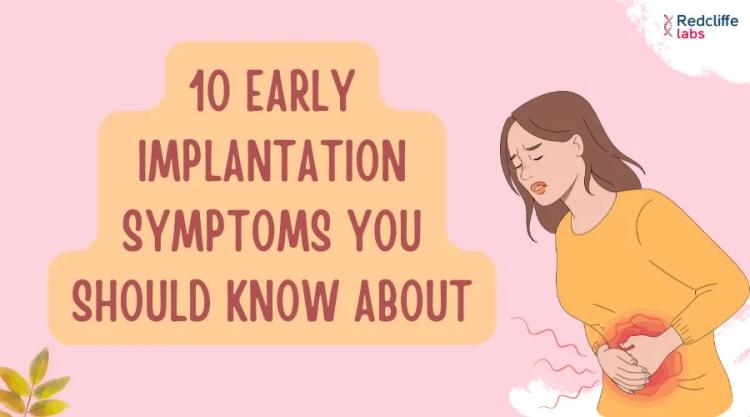The Burden of NCDs on India

Medically Reviewed By
Dr. Ragiinii Sharma
Written By Prekshi Garg
on Nov 16, 2022
Last Edit Made By Prekshi Garg
on Jan 13, 2025

As per recent reports, the burden of NCDs in India is increasing daily as there is a 30 percent probability of death among people aged between 230 to 70 because of non-communicable diseases, including cancer, diabetes, cardiovascular diseases or chronic obstructive pulmonary disease. Every three seconds, an individual dies owing to a non-communicable disease, and this clearly displays the NCD burden in India. It is a bitter truth that NCDs affect not only India but all countries, all genders, all classes, and all stages of the lifespan.
Communicable and Non-communicable diseases
Communicable diseases
Communicable diseases are those that can be transferred from one person to another and are also known as transferable diseases or infectious diseases. These diseases are caused by pathogens like viruses and bacteria like AIDS, malaria, dengue, etc. The disease can be spread through certain methods like touch, intercourse or oral exchange from an infected person, the surface of an object, consuming contaminated food, bites of insects, or through the air like tuberculosis. Symptoms of communicable diseases may vary and will depend upon the disease. Once a pathogen enters the human body, it starts replicating, and that person may begin experiencing certain symptoms. These symptoms are a direct result of pathogens that are advancing the body cells. However, some communicable diseases are mild and symptoms fade in a few days but some can be serious and life-threatening too.
Some facts about communicable diseases
- Communicable diseases can easily spread from one person to another and can develop almost immediately.
- Highly infectious pathogens cause communicable diseases.
- It cannot be inherited from one generation to another.
- Some examples of communicable diseases are AIDS, Typhoid, Tuberculosis, malaria, and cholera.
- These types of diseases can be treated with the help of traditional methods or therapies.
Non-communicable diseases
Non-communicable diseases, also known as NCDs, are diseases that are not transmitted from one person to another. The population faces many problems with NCDs in India, and its main cause is some allergies and nutrient deficiencies. Past and present statistics show India's problem with NCDs as they are a primary cause of death and disability. Non-communicable diseases are a group of conditions caused by acute infection and outcome of long-term health problems created because of any long-term treatment and care.
Some facts about non-communicable diseases:
- Non-communicable diseases cannot be transferred from person to person.
- The main causes that increase the burden of disease on the population are malnutrition, allergies, illnesses because of internal factors, and environmental changes. Abnormalities in cells etc.
- No agents of these diseases cause infections, and they can be inherited from generation to generation.
- These health diseases that come under NCDs develop over a period of time and last for a long time, and are chronic.
- These diseases can be treated surgically or with the help of specialized methodologies.
Main types of non-communicable diseases
As per the statistics, the deaths due to NCBs are higher than communicable diseases, which displays the burden of NCDs on India and other countries. About 70 percent of deaths globally are because of non-communicable diseases. This common health disease cannot be transferred from one person to another but can be transferred genetically if a person has a family history. However, the older age group is more prone to it, but as per current statistics, the younger population is also now more prone to it. Some main types of NCDs are:
- Cardiovascular diseases
Cardiovascular diseases include disorders of the heart and vessels, including hypertension, coronary heart disease like heart attacks, congenital heart diseases, stroke, and rheumatic heart diseases. These health diseases are usually caused by fatty deposits that build up inside the arteries, elevate the risk of blood clots, and can also be associated with damage in arteries of organs like the brain, kidneys, heart, and eyes. Strokes can be caused by bleeding from blood vessels in the brain.
- Diabetes Mellitus
It is the world's most common non-communicable disease and the leading cause of death. It is a chronic disease that occurs when a person's pancreas cannot make insulin of its own. The disease can occur at any age; however, it mainly occurs in children and adults. It is a condition in which a person has a high blood sugar level because of defective production called insulin. Types of diabetes are:
- Type 1 diabetes is diagnosed during childhood or young adulthood and results from an immune system dysfunction.
- Type 2 diabetes occurs during later adulthood and is because of obesity, poor diet, lack of physical activity, and many other lifestyles and environmental factors.
- Gestational diabetes is a type of diabetes that is caused by insulin-blocking hormones that are produced during pregnancy. People who have a family history of diabetes are more prone to this or if they have any pre-existing prediabetes. About 50 percent of this type of diabetes cases can further develop into type 2 diabetes.
3. Chronic respiratory diseases
These are the diseases of the airways and other structures of the lung and are one of the most common non-communicable diseases. Some respiratory diseases are COPD, Asthma, lung cancer, pulmonary hypertension, and occupational lung diseases. Unfortunately, these diseases are taken for granted compared to other NCDs; therefore, it is necessary to understand them well to prevent them.
4. Cancers
Cancers are cell abnormalities that lead to tumor formation, which is one of the most commonly occurring NCDs. Some common cancers are breast, lungs, colon, rectum, prostate, stomach, mouth, blood, and liver. A primary cause of cancer death is when cells in a body function abnormally and form lumps in our vital organs. However, it is a severe health issue caused by multiple factors and can be treated if diagnosed early.
5. Mental health conditions and various injuries
Mental health conditions, along with various injuries, are also non-communicable diseases. Mental disorders like major depressive disorder, anxiety disorder, dysthymia, and bipolar disorder are some of the NCDs. Chronic mental and neurological disorders, including Parkinson's disease and Alzheimer's disease, along with chronic diseases of bone and muscles like arthritis, are also common, adding to the burden of NCDs in India. Non-communicable diseases also include injuries with prolonged impairment of function and environmental diseases that occur due to long-term exposure to toxic chemicals.
6. Autoimmune diseases
Many autoimmune diseases are also considered NCDs, increasing the NCD burden in India. This is the type of disease that occurs when the immune system cannot recognize its own body tissue and which leads to an abnormal immune response. Some common diseases are celiac disease, multiple sclerosis, rheumatoid arthritis, etc.
7. Others
Many other common NCDs include neurodegenerative disease, Rheumatoid arthritis, osteoporosis, hypertension, cataracts, obesity, depression, cognitive impairment, chronic kidney diseases, etc.
Causes and risk factors of non-communicable diseases
NCDs are also chronic health diseases collectively responsible for about 70 percent of all deaths globally. These diseases are of long duration and are generally slow in progression. These NCDs are linked with some common modifiable risk factors which can be changed to improve health conditions like
- Social determinants of health, which is the environment in which all are born, live, and grow.
- Alcohol
- Tobacco and smoking
- Poor nutrition
- Lack of physical activity
- High cholesterol
- High BP
- High glucose levels
- Obesity
- People who are restless and impatient.
- There are some more risk factors that are non-modifiable as they cannot be changed by a person and include sex, age, and genetics.
Symptoms of various common NCDs
Symptoms of various NCDs entirely depend upon the type of disease a person suffers from.
- Symptoms of cardiovascular diseases
- Symptoms of coronary artery disease are constricting pain or discomfort in the chest that leads to heart attacks. This pain can travel to the left arm, shoulder, jaw, or back.
- Symptoms of stroke can be numbness or sudden weakness or fainting.
- Symptoms of rheumatic heart disease are fever, joint pain, swelling, and painless lumps under the skin. You can also feel heart murmurs.
- Symptoms of diabetes
Symptoms of this one of the very common NCDs are increased throat, frequency in urination, increased hunger, weakened immune system, etc.; a person can be more prone to infections and can also damage their kidneys, nervous system, eyes, etc.
Symptoms of chronic respiratory diseases
Symptoms of chronic respiratory diseases are dry cough, noisy breathing, inability to exercise, shortness of breath, and fast breathing.
- Symptoms of Cancer
There are many common symptoms experienced by cancer patients, like reduced appetite and weakness. The symptoms also vary as per the location of cancer, like lumps on the skin, changes in bowel habits, breathing difficulties and cough, difficulty in swallowing, and a lump on the breast.
Treatment of non-communicable diseases
Non-communicable diseases can be treated and also prevented by practicing lifestyle modifications. You must include a daily exercise routine, optimize weight, reduce stress through meditation, do breathing exercises and get adequate sleep. Treatment of NCDs depends upon many factors, like the type and severity of the disease. Early detection is the key to reducing the burden of diseases and their complications to improve life expectancy. The diagnosis of various NCDs is made when symptoms are consistent and can be seen in highly prone individuals.
- To diagnose cardiac diseases, doctors may recommend ECG, Echocardiography, or angiography.
- To diagnose respiratory disease doctors may recommend chest X-ray, CT scan, Spirometry, etc.
- To diagnose glucose and lipid profiles, doctors will recommend blood tests.
- To diagnose cancers, doctors may recommend blood tests, urine tests, imaging scans, Bone scans, UG, and Biopsies.
How to prevent both communicable and non-communicable diseases?
Maintaining good health is the key to long life; however, many preventable communicable diseases like malaria or AIDS are responsible for many deaths. Also, non-communicable diseases like heart disease and diabetes are also major causes of various deaths worldwide. However, disease prevention depends upon various factors as it can be controlled by focusing on risk factors:
- Try to avoid canned food and excessive salt and focus on consuming a high-fiber diet to control hypertension. A healthy and balanced diet can help you prevent both communicable and non-communicable diseases.
- Regular exercise can help reduce the burden of NCDs in India because obesity is linked with many NCDs, including heart diseases, diabetes, Asthma, stroke, and cancers.
- Adequate sleep is another major factor that can help you to prevent various diseases. It is necessary to have at least six to seven hours of sleep as inadequate sleep can lead to elevated stress levels, change in BP, etc.
- Mental relaxation is very important to avoid various diseases, and meditation and exercise can help you with it. It can offer a positive impact on reducing hypertension,., heart attacks, and diabetes.
FAQs
- What are communicable and non-communicable diseases?
The major difference between communicable and non-communicable diseases is that the first is infectious diseases, and the second is chronic diseases.
- How do non-communicable diseases affect the world?
Common non-communicable health diseases are major causes of death and disability worldwide.
- Which doctor to see for NCDs?
NCDs are a group of many diseases that are not transferred from person to person. To get treated, there are different doctors based on the symptoms shown.
- How does a fast food diet contribute to non-communicable diseases?
Fast food is rich in saturated fats and salt and thus offers many health complications that can lead to severe health diseases.
- Is Asthma an NCD?
Yes, Asthma is one of the common NCDs.
- What are the top communicable diseases in India?
The top communicable diseases in India are :
Conclusion
NCDs are also known as chronic diseases and are medical conditions that are linked with long durations and slow progress. Many non-communicable diseases in India are of increasing concern for society. The burden of NCDs on India cannot be overlooked; thus, there is a need to be aware of all. The main risk factors of non-communicable disease can be divided into some categories like self-management, genetic factors, environmental factors, and medical conditions. The most preventive strategy that can prevent you from NCDs is to take care of your diet and physical activities, avoid smoking, and control metabolic disorders. However, NCDs are long-term conditions that can reduce a person's life expectancy and can be managed effectively with medical treatment and lifestyle changes. If you are diagnosed with any one non-communicable disease, then it is necessary for you to get treated and stick to that treatment to ensure your good health.



